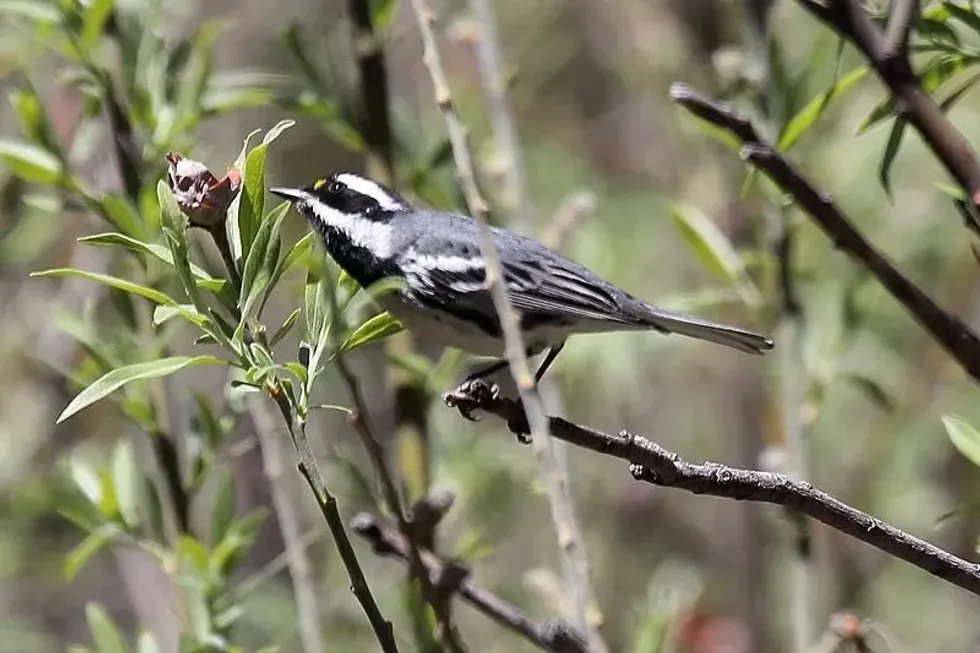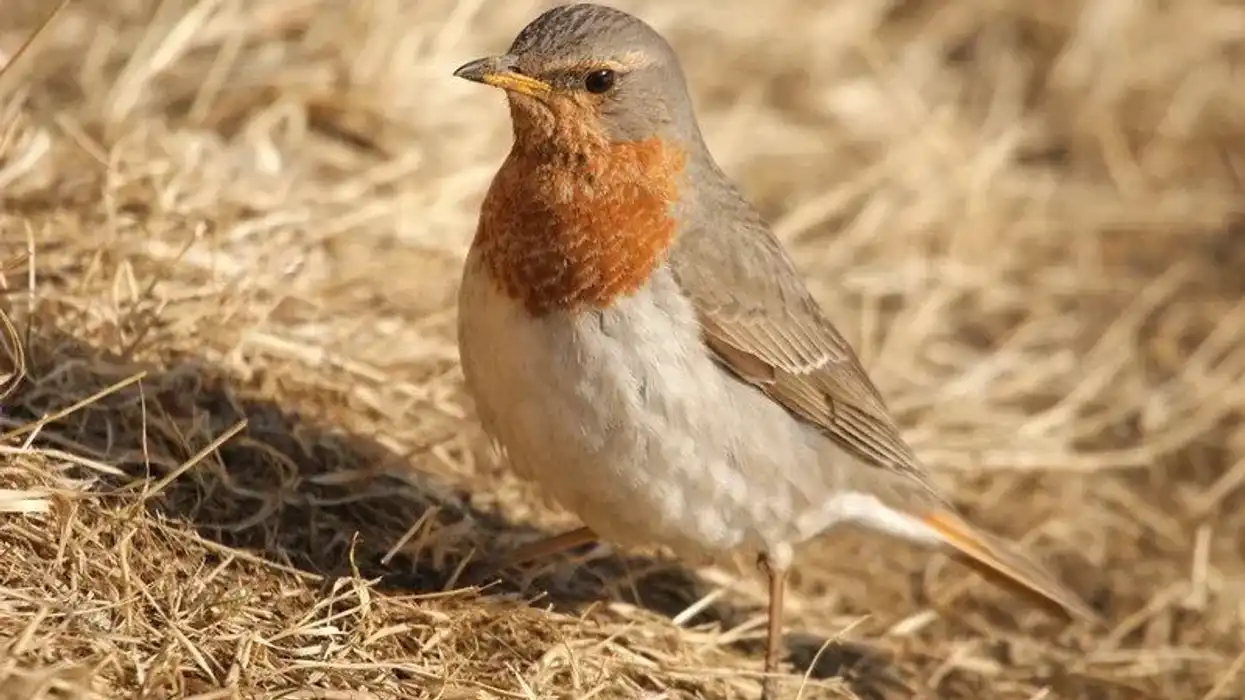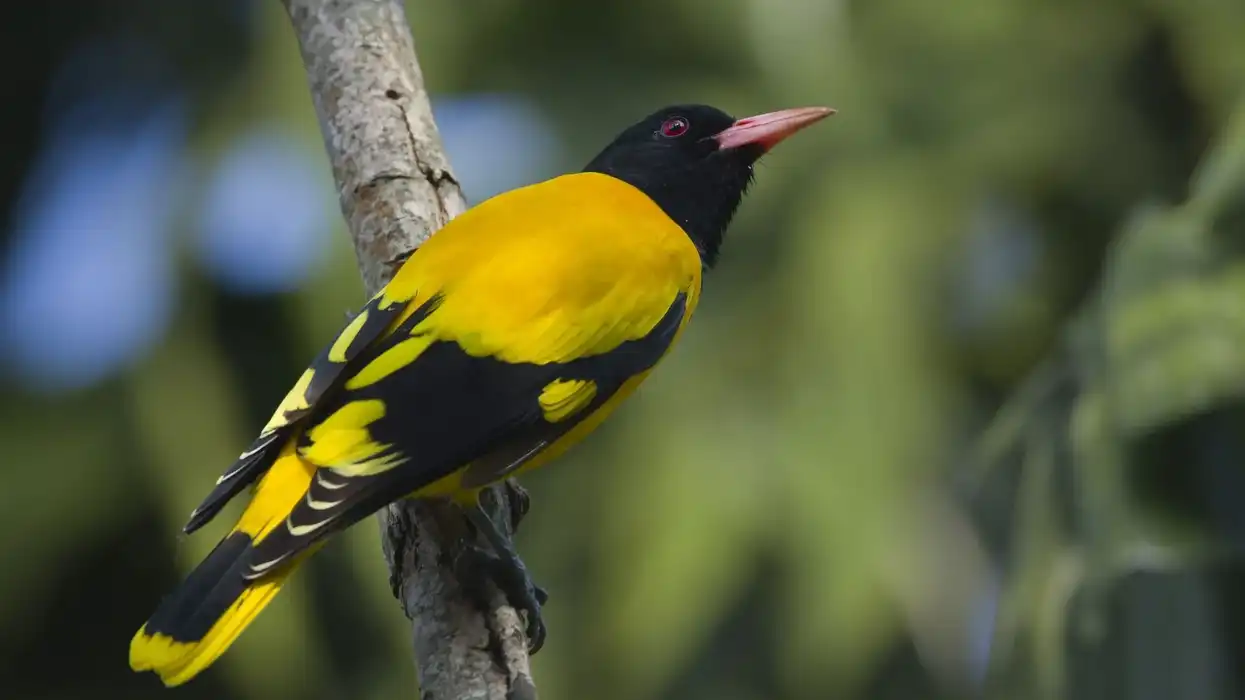The black-throated gray warbler bird is a New World warbler and it belongs to the order Passeriformes, family Parulidae. They are also known as Reinita gris in Spanish and Paruline grise in French. The scientific name of this bird is Setophaga nigrescens, although it was earlier classified as Dendroica nigrescens.
In 1837, John Kirk Townsend described this warbler bird but a Native American tribe, Chinook, already knew of its existence and called it 'Ah Kah a qual'.
Within the genus of Setophaga, the black-throated gray warbler is one of the warblers who also has a black throat and yellow face marks like the Townsend's warbler or the hermit warbler but they are found in different habitats. This type of warbler is also closely related to the grace's warbler.
This bird has two sub-species that look very similar. The nominate sub-species (Setophaga nigrescens nigrescens) is found on the coasts of the Pacific, from British Columbia to California. The other sub-species (Setophaga nigrescens halseii) is found away around the shores of the mainland. Both these birds look very similar but the sub-species Setophaga nigrescens halseii is bigger in size.
Keep reading for more interesting facts about the black-throated gray warbler!
If you liked this article about the black-throated gray warbler, also check out our other articles with amazing facts about the golden-crowned warbler and Myrtle warbler.
Black-Throated Gray Warbler Interesting Facts
What type of animal is a black-throated gray warbler?
The black-throated gray warbler (Setophaga nigrescens) is a bird.
What class of animal does a black-throated gray warbler belong to?
The black-throated gray warbler (Setophaga nigrescens) belongs to the Aves class of Animalia and belongs to the order Passeriformes, family Parulidae.
How many black-throated gray warblers are there in the world?
According to a 2014 study, the current global breeding population of black-throated gray warblers (Setophaga nigrescens) is estimated to be around 2.9 million individuals.
Where does a black-throated gray warbler live?
The black-throated gray warbler (Setophaga nigrescens) is one of the many birds of North America. It is found in the westward parts of North America during the breeding season and it is found in the southern parts of the United States of America and Mexico during the winter.
The black-throated gray warbler range extends from British Columbia to New Mexico during the breeding season.
What is a black-throated gray warbler's habitat?
The preferred habitat of this North American bird is coniferous or mixed forests with pine or oak trees. This bird can be mostly found in a habitat with pine, oak forests, and woodlands. During winter, black-throated gray warblers find a similar habitat in woodland with scrub and thickets.
Who do black-throated gray warblers live with?
The black-throated gray warbler (Setophaga nigrescens) is quite social and they travel in large, mixed flocks during migration. They basically spend most of their time perched on treetops and pick food from the foliage of trees.
How long does a black-throated gray warbler live?
Scientists and researchers have not yet calculated the lifespan of the black-throated gray warbler bird. However, most warblers have an average lifespan of 10 years in the wild.
How do they reproduce?
There is not much information on how or when the black-throated gray warbler breeds but the breeding nest of this species has been studied. The nest resembles an open cup and is made with plant fibers and feathers. The breeding grounds and nests are placed a little higher from the ground in the branches of a tree.
The female bird builds the nest and lays three to five eggs. The breeding pairs are assumed to be monogamous and both parents take care of the young and feed them after they hatch.
What is their conservation status?
The International Union for Conservation of Nature (IUCN) has listed the black-throated gray warbler species as Least Concern in its IUCN Red List as its population trend is deemed to be stable and not in any immediate risk of decline.
Black-Throated Gray Warbler Fun Facts
What do black-throated gray warblers look like?
A male black-throated gray warbler has a black throat as its name suggests along with black marks on the head. It also has black marks on the side of its body.
A female bird looks a bit different from the male bird of this species and is comparatively paler. The female bird has a white-colored throat and does not have as many black and white marks on the wings and flanks.
This species has two white-colored bars on its wings and alternating black and white straps on the head. Both the male and female birds have a bright yellow spot in front of their eyes.
Their feet, bills, and legs are black in color. This bird has the same color pattern as a black-and-white warbler but the markings on their feathers are completely distinct.

How cute are they?
This bird species is quite cute! They may not be as colorful as the yellow warbler but their striking black and white-colored feather pattern makes them stand out. The calls and sounds they make are also very unique.
How do they communicate?
The black-throated gray warbler species uses a variety of sounds and calls to communicate with others of its species. The male birds become quite loud and vocal during the breeding season and during migration.
How big is a black-throated gray warbler?
The average length of these birds lies between the range of 4.7-5.1 in (12-13 cm). Their wingspan falls under the range of 7.5-7.8 in (19-19.7 cm).
The palm warbler is almost twice the size of the black-throated gray warbler as it has an approximate length of 7.9-8.3 in (20-21 cm).
How fast can a black-throated gray warbler fly?
Not much information is available about the speed of these North American birds while they fly. However, the birds of this species travel for almost 1000 mi (1609 km) during migration and travel during the night as well to reach their destination.
How much does a black-throated gray warbler weigh?
The average weight of the black-throated gray warbler species is approximately 0.30 oz (30 g).
What are the male and female names of the species?
There are no separate, distinct names for the male or female birds of this species. Therefore, they are just referred to as male and female black-throated gray warbler birds.
What would you call a baby black-throated gray warbler?
A baby black-throated gray warbler does not have a unique name. Using the terminology of other bird species, a baby bird is referred to as a chick and when it grows into a young bird, it is called fledgling.
What do they eat?
These birds have a diet that mainly consists of insects, small caterpillars, and oakworms.
Are they dangerous?
Black-throated gray warblers are not dangerous or harmful to human beings. They are one of the bolder warblers who wander around in their habitat range without any fear of humans.
Would they make a good pet?
These birds of North America would not make a good pet like the Fischer's lovebird. They prefer their own wild habitat and geographical range. In addition to that, they are also migratory birds and would not fit in well with a family.
Did you know...
Black-throated gray warbler birds have a unique method of distraction to protect their nests. In order to ward off intruders from figuring out where their nests are located, these North American birds pretend that they have a broken wing.
What does the black-throated gray warbler's call sound like?
Both the male and female birds make a dull 'chup' or 'tup' call. The male birds are more vocal especially during the breeding season and they sing five to nine notes which vary from time to time.
A black-throated gray warbler song may sound like 'weeyz weezy weezy' followed by a rise in the pitch and intensity. They also make constant 'che-che-che' noise.
Do black-throated gray warblers migrate?
Black-throated gray warblers are not long-distance migrants but they undertake migration for a short or medium distance during the winter season. They move from the western parts of the United States of America towards the southern parts of the North American continent and settle in Mexico.
They follow the Pacific coastal range and mountain range which guide them towards the south.
Learn more about some other birds from our atlas beetle facts and Common Grackle pages.
You can even occupy yourself at home by coloring in one of our free printable black-throated gray warbler coloring pages.









